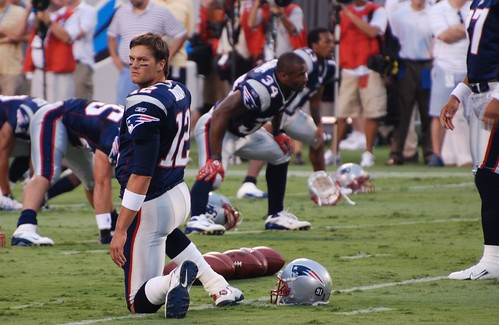 A rare sarcophagus is one of many unique attractions at a beautiful old church included on a tour of churches this weekend in Brownsville, Pa.
A rare sarcophagus is one of many unique attractions at a beautiful old church included on a tour of churches this weekend in Brownsville, Pa.BROWNSVILLE, Pa. – The Rev. Keith Pozzuto doesn’t believe it will be long before his congregation learns the contents of a rare sarcophagus in the historic cemetery behind his church.
The stone grave marker that dates to the early 1800a is deteriorating to the point that it should soon collapse amid the plot of graves at Christ Episcopal Church in Brownsville, Pa.
"It's pretty strange," Pozzuto said. "Inside is a wooden box containing the remains."
He doesn’t know whose grave the tomb contains since much of the lettering relating to the deceases has disappeared with the weather.
It’s just one of a number of interesting stops in this graveyard that will be included in a tour this weekend of local churches to raise money for efforts to dress up the old town along the Monongahela River.
People have been mysteriously placing such odd objects as a round stone pained to look like an alien beside other tombstones in this cemetery in the 300 block of Church Street. The place is just plain weird and creepy in a wonderful sort of way.
There also is false story that is still told today about President George Washington’s cousins having been buried here after being murdered by their slaves.
Here is that tale, taken from the pages of the Observer-Reporter newspaper in Washington, Pa.:
By Scott Beveridge
The story involving two cousins of President George Washington having been killed by their slaves and buried in Brownsville appears to have been mostly bogus from the onset.
The author of an 1881 article in the Magazine of American History was unable to find any mention of the men, Archibald and John H. Washington, in the former president's genealogy.
Yet people still believe the legend about the men buried here behind the historic Christ Episcopal Church, a tale that has been passed along by word-of-mouth through the generations.
"If enough people say it, it must be true," said the Rev. Keith Pozzuto, pastor of the church that will be included in an Oct. 4 tour of Brownsville churches to raise money for a local beautification project.
The tour guide here surely will discuss the story about the 1818 deaths of the men.
The lead author of the magazine story, John Austin Stevens, claimed to have interviewed eyewitnesses of good character for his story. They insisted Archibald, 33, and John Washington, 38, died of typhoid fever after receiving the diagnosis from a local physician who also came down with the same illness after treating them.
The only part of the story that appeared to be true involved their dying while transporting as many as 100 slaves from Virginia to Kentucky while stopped in Brownsville, which was the gateway to the west at the time.
The mystery deepens as to how their tombstones found their way beside that of town founder Thomas Brown. Stevens claimed the visitors were buried in a potter's field reserved for strangers and blacks, having been refused burial at the church whose members were staunchly opposed to slavery.
Regardless, this church built in 1859 "has always had a storied place" in the Episcopal Diocese of Pittsburgh, Pozzuto said.
It's believed to be the second-oldest Episcopal church west of the Allegheny Mountains, behind one in Mt. Lebanon, Pozzuto said.
The main doors to the Brownsville church lead to an understated sanctuary with an altar crafted from Italian marble and wood imported from Germany. The altar represents the marriage of the Roman Catholic and German Protestant churches that created the Anglican congregation, Pozzuto said.
The building also boasts a rare and priceless Tiffany stained-glass window, he said.
Meanwhile, the cemetery also contains remarkably preserved tabletop tombstones and an unusual sarcophagus. The 1854 above-ground receptacle holds the remains of a corpse whose identification has worn with weather off the stone.
"It's pretty strange," Pozzuto said. "Inside is a wooden box containing the remains."
The cemetery also holds the graves of many members of the Bowman and Hogg families that were prominent to Brownsville's early rises as an important trade center.
"The history of Brownsville is right here behind this church," Pozzuto said.
 The main entrance to the church leads to an antique altar crafted with marble from Italy and wood from Germany, materials that represent the two countries that gave life to this Anglican congregation.
The main entrance to the church leads to an antique altar crafted with marble from Italy and wood from Germany, materials that represent the two countries that gave life to this Anglican congregation.The church tour is hosted by the Northside Beautification Committee to raise money for the purchase banners for Market Street.
The other churches involved are: St. Peter's Roman Catholic Church, St. Ellien's Orthodox Church, First United Methodist Church and Calvin United Presbyterian Church.
The tour will begin at 3 p.m. Oct. 4 at St. Peter's Church, 300 Shaffner Ave. Tickets are available by calling 724-785-2444 or can be purchased between 2 and 3 p.m. the day of the tour at St. Peter's.



















